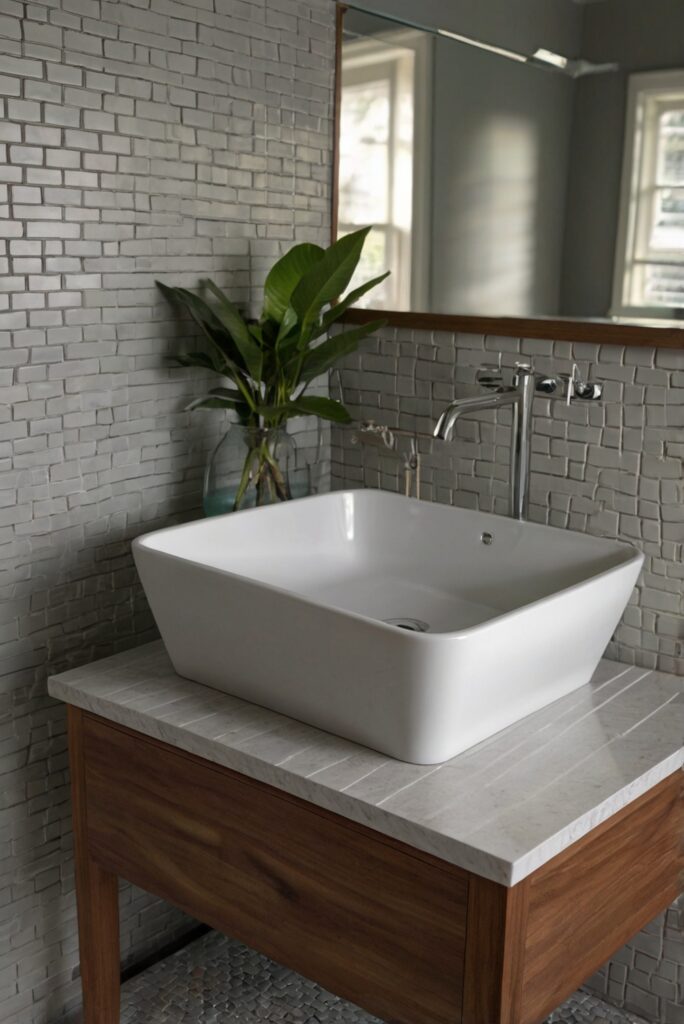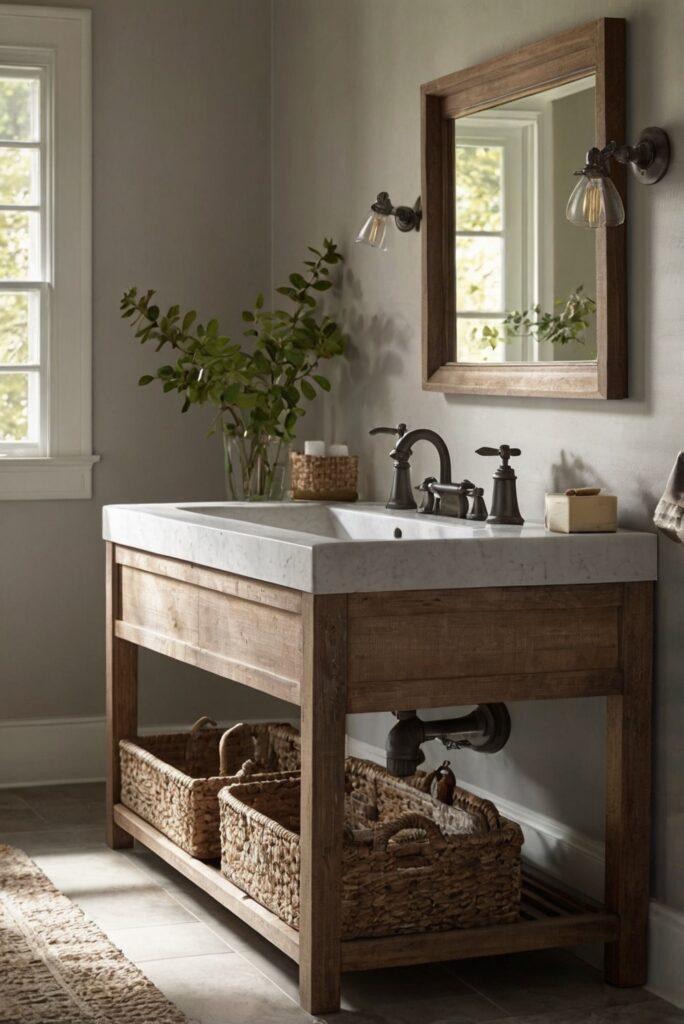Today, we’ll explore selecting the right sink material for your bathroom. Dive into expert tips for optimizing design and functionality in your daily interior designer routine.
How to Select the Right Sink Material for Your Bathroom?
As a daily routine for my home décor, choosing the right sink material for your bathroom is crucial. Consider factors such as durability, maintenance, style, and budget.
Some popular sink materials include porcelain, ceramic, stainless steel, and glass. Porcelain sinks are elegant but can chip easily, while stainless steel sinks are durable and easy to clean.
When selecting a sink material, ensure it complements your overall home decorating style and interior design. Make sure to plan the space effectively for an efficient layout. Choose the sink material that best suits your needs and preferences for a well-designed bathroom.
Remember to work with designers who understand space planning and color matching to create a cohesive look.
Factors to Consider When Selecting a Sink Material for Your Bathroom
When choosing the right sink material for your bathroom, it is important to consider several factors to ensure that you make the best decision for your needs. Some of the key factors to keep in mind include:
Durability
When selecting a sink material, durability is a crucial factor to consider. You want a sink that can withstand daily use and last for years to come. Materials like porcelain, fireclay, and stainless steel are known for their durability and resilience to wear and tear.
Style and Design
The sink you choose should complement the overall style and design of your bathroom. Consider the aesthetic appeal of different materials, such as glass, copper, or marble, and how they will fit in with your existing decor.
Maintenance and Cleaning
Some sink materials require more maintenance and cleaning than others. For example, natural stone sinks may need to be sealed regularly to prevent staining, while stainless steel sinks are easy to clean and maintain. Consider how much time and effort you are willing to invest in upkeep when choosing a sink material.
Cost
Cost is another important factor to consider when selecting a sink material for your bathroom. Some materials, such as marble or granite, can be more expensive than others, like porcelain or ceramic. Consider your budget and weigh the cost against the durability and aesthetic appeal of the material.
Environmental Impact
For environmentally conscious consumers, the environmental impact of the sink material may be a consideration. Some materials, like recycled glass or bamboo, are more sustainable and eco-friendly choices compared to others. Consider the environmental impact of the material you choose when making your decision.
In conclusion, selecting the right sink material for your bathroom involves considering factors such as durability, style and design, maintenance and cleaning requirements, cost, and environmental impact. By carefully evaluating these factors and choosing a sink material that meets your needs and preferences, you can create a functional and aesthetically pleasing bathroom space that will stand the test of time.
1. What are the different sink materials available for bathrooms?
When selecting a sink material for your bathroom, you have various options to choose from, including porcelain, stainless steel, ceramic, glass, and stone. Each material has its unique characteristics in terms of durability, maintenance, and aesthetics.
2. How to determine the best sink material for your bathroom?
Consider factors such as your budget, the overall bathroom design, maintenance requirements, and durability when choosing the right sink material. For example, if you’re looking for a cost-effective option, stainless steel sinks are a popular choice. On the other hand, if you want a luxurious feel, consider stone or glass sinks.
3. What are the pros and cons of different sink materials?
Each sink material has its advantages and disadvantages. For instance, porcelain sinks are easy to clean but can chip easily, while stone sinks are durable but require regular maintenance to prevent staining.
4. How to maintain different sink materials?
Proper maintenance is crucial to prolonging the lifespan of your sink. Depending on the material, you may need to use specific cleaning products or avoid abrasive cleaners to prevent damage. Regular cleaning and maintenance routines can help keep your sink looking new for years to come.
5. Are there any new trends in sink materials for bathrooms?
In recent years, emerging trends in sink materials for bathrooms include concrete sinks, which offer a modern and industrial look, and composite sinks, which combine the durability of stone with the versatility of other materials. These innovative options provide homeowners with more choices to match their unique style preferences.



